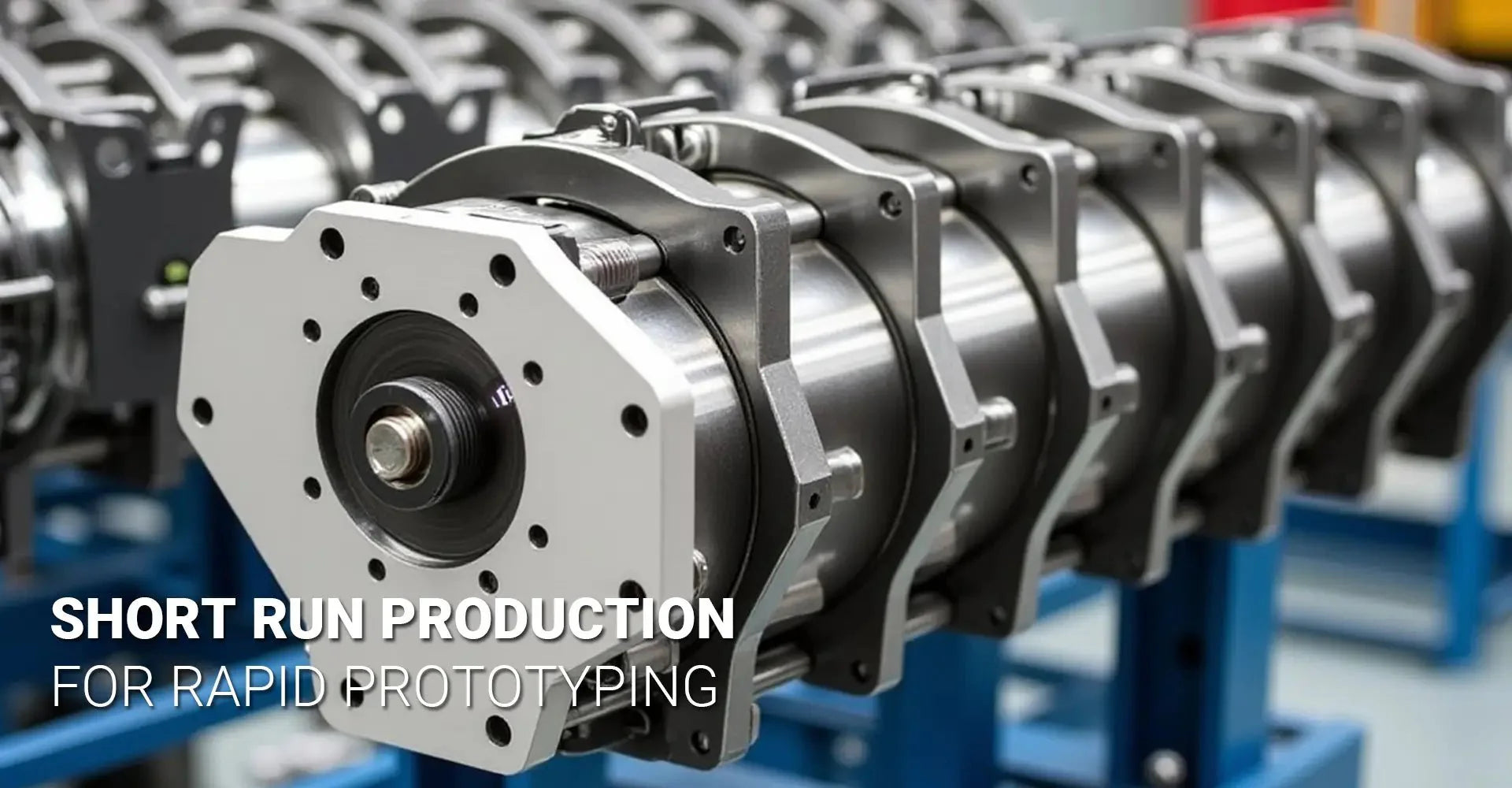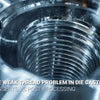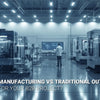Why Choose Short Run Production for Rapid Prototyping?

Why Choose Short Run Production for Rapid Prototyping?

Manufacturing success often hinges on making smart production choices that align with your project goals. Short run production, when paired with rapid prototyping, offers a compelling solution for businesses seeking to bring products to market quickly while maintaining flexibility and controlling costs.
Key Statistics You Should Know:
- Setup costs reduced by up to 70% compared to traditional manufacturing
- Production time cut by up to 90% through advanced prototyping techniques
- Significant reduction in material waste and storage costs
Before diving into the details, it's worth noting that short run production combined with rapid prototyping has become increasingly popular across industries - from aerospace to consumer products - thanks to its ability to deliver quick results while minimizing financial risks.
Table of Contents
- What Are the Real Cost Advantages of Short Run Production in Prototyping?
- Which Technologies Drive Short Run Production Success?
- How Does Customer Feedback Shape Short Run Production?
- What Makes Small Batch Production Different from Mass Manufacturing?
What Are the Real Cost Advantages of Short Run Production in Prototyping?
The financial benefits of short run production extend far beyond initial savings. When combined with professional rapid prototyping services, companies can significantly reduce their development costs while maintaining high-quality standards.
Short run production offers immediate cost benefits through reduced setup requirements, minimal material waste, and lower storage needs. This approach particularly shines when paired with rapid prototyping, as it allows companies to validate designs without committing to large-scale production runs.

For businesses considering this approach, the cost advantages become even more apparent when factoring in the flexibility to make design changes without scrapping large inventory quantities. This adaptability, combined with precision CNC machining capabilities, ensures that quality isn't sacrificed for cost savings.
Which Technologies Drive Short Run Production Success?
The backbone of successful short run production lies in its integration with cutting-edge manufacturing technologies. Modern manufacturing facilities employ a variety of techniques to ensure precision and quality in every production run.
The technological foundation of short run production includes several key components:
- CNC Machining: Various metals and plastics for CNC machining can be precisely shaped through computer-controlled processes, offering exceptional accuracy for complex parts. This technology excels in producing detailed components with tight tolerances, making it ideal for prototypes that require mechanical testing.
- Rapid Tooling: This technology allows for the creation of temporary or bridge tooling using materials like silicone or urethane. These tools can produce hundreds of parts while costing significantly less than traditional steel molds, making them perfect for short run production.
- Digital Printing and Additive Manufacturing: These technologies enable the production of complex geometries and custom features without traditional tooling constraints. When combined with professional rapid prototyping services, they offer unparalleled flexibility in design and production.

The integration of these technologies is further enhanced by:
- Advanced CAD/CAM software for precise design control
- Quality control systems with real-time monitoring
- Automated material handling systems
- Digital twin technology for process optimization
The combination of digital design tools, precise manufacturing equipment, and quality control systems ensures that each production run meets exact specifications while maintaining the flexibility to adjust based on feedback.
How Does Customer Feedback Shape Short Run Production?
Customer feedback plays a crucial role in product development, and short run production excels at incorporating this valuable input quickly and effectively.
The ability to produce small batches allows companies to test market response and gather user feedback without the risks associated with large production runs. This iterative approach ensures that products can be refined based on real-world usage before scaling up production.

The rapid prototyping process becomes even more valuable when combined with short run production, as it allows for quick implementation of customer-suggested improvements while maintaining cost-effectiveness.
What Makes Small Batch Production Different from Mass Manufacturing?
Understanding the distinction between small batch and mass production is crucial for making informed manufacturing decisions. Small batch production offers unique advantages that set it apart from traditional manufacturing approaches.
Key Differentiating Factors:
-
Setup and Tooling
- Small Batch: Uses flexible tooling and CNC machining services that can be quickly reconfigured
- Mass Production: Requires expensive, permanent tooling optimized for single designs
-
Production Volume and Costs
- Small Batch: Higher per-unit costs but lower total investment
- Mass Production: Lower per-unit costs but requires significant upfront capital
-
Quality Control
- Small Batch: Easier to monitor and control quality for each part
- Mass Production: Relies on statistical quality control methods
-
Customization Capability
- Small Batch: Easily accommodates design changes between runs
- Mass Production: Changes require significant retooling and cost
While mass production excels at reducing per-unit costs through economies of scale, small batch production provides greater flexibility and reduced financial risk. This approach is particularly valuable during the product development and market testing phases.
Additional Benefits of Small Batch Production:
- Reduced inventory carrying costs
- Better ability to respond to market changes
- Lower risk of obsolescence
- Improved cash flow management
- Greater opportunity for product customization

The key differences extend beyond just quantity - they encompass everything from setup times and costs to quality control processes and ability to implement design changes. Small batch production, when combined with advanced prototyping capabilities, offers an agile approach to manufacturing that aligns well with modern market demands.
Conclusion
Short run production, when combined with rapid prototyping, offers a powerful solution for businesses looking to develop and test products efficiently. The ability to produce small batches quickly, incorporate feedback effectively, and maintain flexibility throughout the development process makes this approach particularly valuable in today's fast-paced market.
Consider these key takeaways:
- Reduced financial risk through smaller production runs
- Faster time-to-market capabilities
- Enhanced ability to incorporate customer feedback
- Greater flexibility in design and production
Recommended Resources
[rapid prototyping](https://backendless.com/rapid-prototyping-a-practical-guide-for-application-development-teams/)[^1]
[Digital Printing and Additive Manufacturing](https://www.crossmanufacturing.com/news/the-benefits-of-additive-manufacturing/)[^2]
[precision CNC machining](https://west.mtseries.com/news/precision-machining-technology-cnc-machining-advancements/)[^3]
[short run production for rapid prototyping](https://www.rapiddirect.com/blog/benefits-of-short-run-production/)[^4]
[rapid tooling](https://www.pacific-research.com/what-are-the-advantages-of-rapid-tooling-prl/)[^5]
---
[^1]: Explore this link to understand the latest techniques and tools that enhance rapid prototyping, making your projects more efficient.
[^2]: Learn about the benefits of these technologies and how they can revolutionize your production methods and design capabilities.
[^3]: Discover how precision CNC machining can elevate your production quality and efficiency, ensuring top-notch results in your projects.
[^4]: Explore this link to understand how short run production can accelerate your prototyping process and reduce costs.
[^5]: Discover the advantages of rapid tooling and how it can enhance your manufacturing efficiency and product development.
-
Posted in
Rapid Prototype





